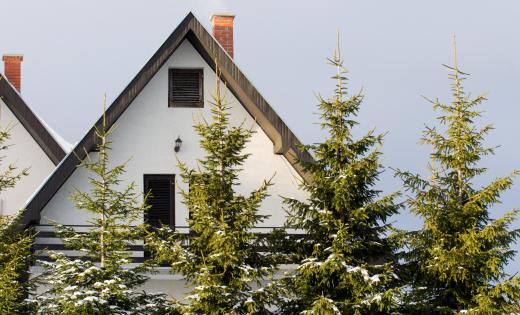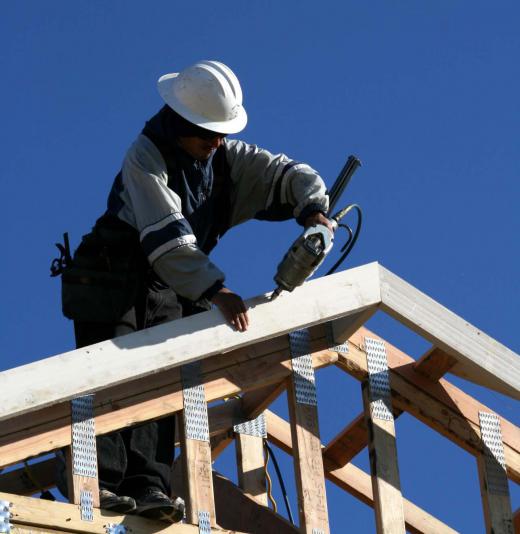A common rafter is a building component used to construct a sloped roof. These rafters are made from wood lumber, and make up a part of a standard wood framing system. On a traditional gable roof, which features a triangular shape, the common rafters form the sloped sides of the triangle. Each roof is made up of many common, or general purpose, rafters. The number of common rafter units required for each project depends largely on the size and scope of the roof, as well as the distance each unit rafter must span.
Each common rafter runs from the top of the building's exterior wall to the peak, or ridge of the roof. The rafters are tied together at the base by ceiling joists, which run parallel to the floor. A series of small beams, or collar ties, are used to stabilize each pair of rafters mid-way to the top. A single board known as a ridge plate fits in between the top of each pair of rafters.

Builders rely on screws or nails to fasten each common rafter to surrounding structural supports. The top end of each rafter features an angled, or plumb cut, which enables it to fit flush against the ridge plate. The bottom of the common rafter is often cut into a pointed shape to accommodate soffits and flashing. A special cutout, known as a birdsmouth cut, is used to allow the rafter to sit snugly over the top of the exterior walls.

It is important when choosing a common rafter to calculate the correct length for each unit. Builders and installers can utilize a variety of tools to determine rafter sizing, including online calculators and manufacturer's charts. Most construction calculators also incorporate a rafter sizing feature. Generally, rafter length is a factor of the overall span, or width, as well as the pitch, or slope, of the roof.
In many parts of the world, builders have switched from standard wood framing to pre-fabricated roof trusses. These trusses feature a triangular shape, which incorporates two common rafters and a connecting roof beam. Metal plates and other fasteners are used to join these components together. These common truss units typically cost more than wood framing, but also offer many advantages to builders and homeowners. They allow contractors to construct a roof much more quickly than with traditional methods, which can cut labor costs and shorten the project schedule.
